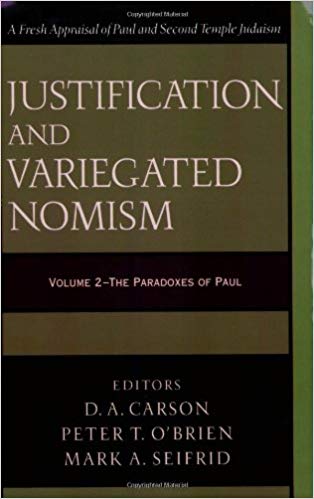A Brief Chapter Summary from Books At a Glance
By Nathan Sundt
About the Author
D. A. Carson is Research Professor of New Testament, Trinity Evangelical Divinity School.
Overview
Don Carson, referring to the “extraordinarily complex and diverse” state of affairs in Pauline studies, simplifies the discussion to “varying assessments of what Paul thinks about a series of polarities, e.g. the relationship between the new covenant and the old, the relationship between being “in Christ” and being a Jew (or even a Pharisee), the relationship between the grace of God in Christ and being under the law.” Each matter is difficult to decide, Carson understands, but each decision will be played out along “these axes.” The source of the dizzying array, therefore, traces back to the changes “in perception of both poles, Judaism (especially Palestinian Judaism) and Pauline Christianity.”
E. P. Sanders is not to be credited fully for a clean analysis since his treatment “was as distortive of the sources as the ones he was overturning, as long as he insisted that his categories rightly captured all the relevant literature.” Carson praises the way in which the work of Sanders broke the hegemonic control of those treatments of pre-Christian Judaism that used its “merit theology” as nothing short of an insult. Carson decries the fact that Sanders made “covenantal nomism so much the controlling grid for understanding Second Temple Judaism . . . that it exercised hegemonic control over the reading of Paul.”
Further, defenders of Sanders now engage in “revisionist historiography” when they “judge such criticisms of Sanders to be too harsh . . . .” Sanders contention, they argue, carries because some Second Temple Sources lend support. “One wishes that their assessments of what Sanders attempted were right. Little of the brouhaha would have taken place, and he probably would have been viewed as having introduced a major corrective without introducing a major reductionism.” Indeed, Carson rightly contends that, according to Sanders’s rendering of covenantal nomism, the grid “ought to exercise hegemonic control over the exegesis of the Pauline corpus porpoise” (emphasis original).
The Sanders-thesis urged that “Paul must be re-interpreted in ways quite different from those left us by the Reformation heritage,” so those who contend that such was not the point are merely trying to rescue the rhetoric of new perspective exponents. “Once covenantal nomism is seen to be but one strand of a far more complex mosaic, it loses its ability to domesticate the exegesis of Paul.” Carson points to the work of Dunn and Wright for which the “warrant” was the “hegemonic control of covenantal nomism.”
Carson envisions an appreciation of the complexity of Second Temple Judaism that allows for a fresh reading of Paul that leaves the apostle on no “Procrustean bed of a monolithic background. If this listening [to Paul] can be done while learning from Sanders’s valuable correctives, the net result of this quarter-century discussion may be a considerable gain.” Carson highlights again the importance of “the parting of the ways,” noting how “questions of self-definitions for Christians antedated the shape those questions took on when more and more Gentiles were admitted” (since all the first Christians were from Jewish or proselyte origin). Points of difference other than the “boundary markers” in fact must operate and did operate before the influx of Gentiles.
[To continue reading this summary, please see below....]The remainder of this article is premium content. Become a member to continue reading.
Already have an account? Sign In
